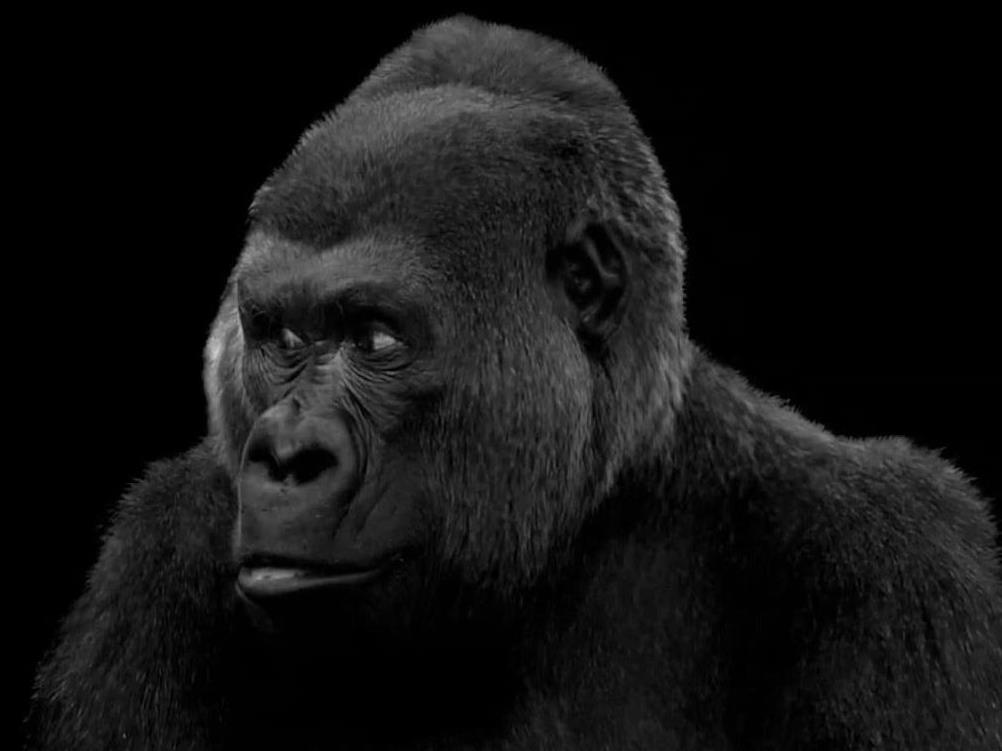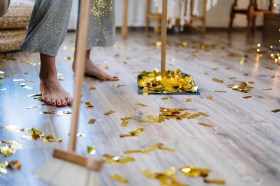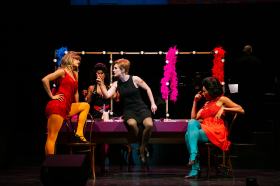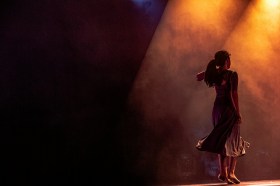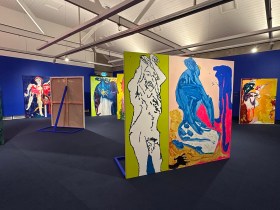We are all visitors here. Visitors is both the title and the theme of the haunting new film by Godfrey Reggio, screened at the Opera House with composer Philip Glass’s live score performed by Sydney Symphony Orchestra. ‘Here’ may be our planet or the moon, a remote forest or even the Opera House itself, as the film concludes by turning the attention on the audience watching a female gorilla, as we watch them.
It’s all very meta. Visitors is a haunting, beautifully shot art movie. It opens with the image of Triska, the solemn looking gorilla who looks as if she’s been on earth longer than any of us. Fading to black, a number of long, still portraits appear. The transition between each takes time; the subjects, ranging from children to the elderly, stare unblinkingly ahead. Philip Glass’s score loops in a meditative fashion, conveying an other-worldly feeling. The dim lights over each musician on the packed stage add to the atmosphere.
Across seventy five images in almost ninety minutes, Reggio takes us from abandoned fairgrounds to mangrove trees and even over the surface of the moon. The overall effect is to provoke thought on our modern world. The score rises in parts, creating an air of anticipation, before the next series of images appear on screen, slowly and deliberately. The movie ends with one last image of Triska as the camera peels back to reveal the large audience staring at her.
It’s a technologically beautiful film. Shot using an unusually high frame rate and impeccable lighting, the images of over-exposed trees and people are particular gems. This is the most impressive aspect of Visitors. Reggio trained as a monk until the age of twenty-eight and his philosophy of examining the world in extreme detail is clear here. For the less patient, this makes it simply too long. The accompanying music does little to detract from this forced examination. What opens as a moving cinematic score quickly becomes repetitive, a trait which was likely intended. While there are some musical surprises and lifts, these ultimately lead to very little change on screen, which can be frustrating for the modern viewer. Glass, previously known for the experimental music he describes as ‘unconventional by industry standards’, composed an entirely conventional accompaniment to Visitors. It is evocative and executed perfectly by the Sydney Symphony Orchestra, but would not be out of place in a Hollywood blockbuster movie.
When the predictable happens and the audience are exposed at the film’s end, our faces are almost freeze-framed in expressions which vary between bewilderment, boredom, joy and awe. One imagines that if the camera were turned on the audience in the Concert Hall, a similar reaction would have been witnessed. Reggio, who has previously stated he’s happy if fifty percent of people like his movie and the other fifty percent have widely different views on it, has surely seen this aim realised through Visitors.
Rating: 3 stars out of 5Visitors
Written and directed by Godfrey Reggio
In collaboration with Philip Glass and Jon Kane
Presented by Steven Soderbergh
Music Composed by Philip Glass
A live cinematic orchestral event with the Sydney Symphony Orchestra
Conducted by Michael Reisman
Concert Hall, Sydney Opera House
Sydney Festival
www.sydneyfestival.org.au
23 – 24 January

